Q
What is the top speed of Hyundai Sonata?
The top speeds vary among different models of the Hyundai Sonata. The 2020 Hyundai Sonata 2.5 Premium can reach a top speed of 210 km/h, while both the 2017 Hyundai Sonata 2.0 Elegance and the 2017 Hyundai Sonata 2.0 Executive have a top speed of 200 km/h. The top speed is one of the important performance indicators of a car. However, in actual driving, due to safety concerns and legal restrictions, you usually won't drive at this speed. Please make sure to follow traffic rules during driving to ensure driving safety.
Special Disclaimer: This content is published by users and does not represent the views or position of PCauto.
Related Q&A
Q
What is the life expectancy of Hyundai Sonata Hybrid?
The service life of the Hyundai Sonata Hybrid can vary depending on multiple factors. Generally speaking, the battery of the Sonata Hybrid usually lasts about 5 years. As for other components, Hyundai offers a 5 - year or 300,000 - kilometer warranty for the whole vehicle, which reflects the expected durability of the vehicle under normal use conditions. The warranty periods for some core components, such as the power battery assembly, drive motor assembly, motor controller assembly, and vehicle controller assembly, are even longer, sometimes up to 8 years or 150,000 kilometers. Regular maintenance, good driving habits, and usage conditions all play important roles. If properly maintained, serviced on time, and driven carefully, this car has the potential to serve you for over 10 years and cover a mileage of as much as 200,000 kilometers or more.
Q
Which model of Hyundai Sonata is the most expensive ?
Currently, the most expensive model of Hyundai Sonata in Malaysia is the Sonata N-Line version, with an official price of approximately RM218,888 (excluding insurance). This high-performance version is equipped with a 2.5L Turbo GDi four-cylinder engine, capable of outputting 290 horsepower and 422 Nm of torque. Paired with an 8-speed wet dual-clutch transmission and front-wheel drive, it can accelerate from 0 - 100 km/h in just 6.2 seconds.
Compared with the standard Sonata (equipped with a 1.6L Turbo or 2.0L naturally aspirated engine), in addition to its powerful performance, the N-Line is equipped with a sport-tuned suspension, 19-inch wheels, an exclusive N Line exterior kit (including a more aggressive aerodynamic design and quad exhaust pipes), and an all-black interior with red stitching, giving it an overall sporty coupe style.
Although it's price is high, the N-Line version offers a comprehensive configurations, including the advanced Hyundai SmartSense active safety system (such as SCC Smart Cruise Control and FCA Forward Collision Warning), a panoramic sunroof, and a Bose sound system. It's a great choice for consumers who seek both performance and luxury.
Q
How about the speed performance of Hyundai Sonata?
The speed performance varies among different models of the Sonata. The top speed of the 2020 Hyundai Sonata 2.5 Premium can reach 210 km/h, while the top speeds of the 2017 Hyundai Sonata 2.0 Elegance and Hyundai Sonata 2.0 Executive are 200 km/h. These figures reflect the vehicle's potential in terms of power performance. However, in actual driving, it's difficult to reach the vehicle's top speed due to factors such as road conditions, traffic regulations, and driving behavior. For example, the speed limits on ordinary city roads are usually quite low. Although the speed limits on highways are relatively higher, it's not allowed to speed at will. It is recommended that everyone abide by the regulations while driving, reasonably control the speed according to the actual situation, and ensure driving safety.
Q
What's the engine displacement of Hyundai Sonata?
Different models of Sonata have various engine displacements. For example, the 2020 Hyundai Sonata 2.5 Premium is equipped with an engine with a displacement of 2497cc, which can provide ample power to meet the needs of daily driving and some driving scenarios with power requirements. As for the 2017 Hyundai Sonata 2.0 Elegance and Hyundai Sonata 2.0 Executive, their engines have a displacement of 1999cc. Relatively speaking, they may perform better in terms of fuel economy and can also provide stable power output for the vehicle. Engines with different displacements each have their own characteristics. Consumers can choose the model that suits them according to their own driving habits, such as the demand for power and considerations regarding fuel consumption.
Q
What's the service life of Hyundai Sonata's spark plugs?
The service life of the Hyundai Sonata's spark plugs depends on their types. The more affordable nickel alloy spark plugs typically last about 20,000 - 30,000 kilometers. Platinum spark plugs, with better heat and corrosion resistance, can be used for 60,000 - 80,000 kilometers. Iridium spark plugs, known for their high ignition performance, usually have a service life of 80,000 - 100,000 kilometers or even longer.
However, other factors can also have an impact. If the vehicle often drives under harsh conditions such as extreme temperatures, high humidity, and dusty areas, or experiences frequent starting and stopping, the spark plugs may wear out more quickly. Aggressive driving habits like rapid acceleration and hard braking can also increase the engine load and accelerate the aging of the spark plugs. Therefore, although the above are general reference standards, it's very important to regularly check the condition of the spark plugs and follow the vehicle maintenance manual for optimal performance.
Q
Does Hyundai Sonata have spark plug wires?
Yes, Hyundai Sonata is equipped with spark plugs, but it doesn't have the traditional externally exposed spark plug wires. Spark plugs are crucial components in the engine's ignition system, as they generate electric sparks to ignite the air - fuel mixture in the engine's combustion chamber, enabling the engine to operate properly.
With the development of modern automotive technology, many vehicles, including the Hyundai Sonata, have adopted the Distributorless Ignition System (DIS) or the Direct Ignition System (DI). In these systems, the ignition coils are directly installed on top of the spark plugs, providing high - voltage electricity directly to the spark plugs. They no longer rely on the traditional long spark plug wires to transmit high - voltage electricity.
This design reduces electromagnetic interference, improves ignition efficiency and engine performance, and also decreases the likelihood of spark plug wire failures, such as electrical leakage and aging. At the same time, it enhances the overall reliability of the vehicle and its fuel economy.
Q
How many cylinders does Hyundai Sonata have?
Whether it's the regular version or the N-Line version, the Sonata features a 4-cylinder (inline-four) engine layout, which is also a common engine configuration for mainstream mid-size sedans these days. This setup can not only deliver decent power output but also balance it with fuel efficiency. Hyundai has invested lot in developing turbocharged engine technology in recent years. For example, the SmartStream series of engines has optimized combustion efficiency and reduced emissions, enabling the four-cylinder engine to achieve performance comparable to that of a six-cylinder engine. If car owners prefer more potent power, they might need to consider higher-end rear-wheel-drive or all-wheel-drive performance cars. However, for general family use or mild sporty driving needs, the 1.6T or 2.5T four-cylinder engines are good enough for daily driving and highway cruising.
Q
How much does it cost to change Hyundai Sonata's spark plugs ?
The cost of replacing the spark plugs of Hyundai Sonata ranges from approximately RM200 to RM500, depending on the model year, engine type (1.6T or 2.5T), and the brand of spark plugs used (such as NGK, Denso, or original factory parts). A standard 1.6L Turbo engine usually uses iridium or platinum spark plugs, which cost around RM50 to RM150 each. On the other hand, the 2.5L Turbo engine (N - Line version) may require higher - performance spark plugs, which are slightly more expensive (around RM80 to RM200 each).
In addition, labor costs typically range from RM80 to RM150. Dealerships may charge more, providing factory - certified parts. Third - party repair shops offer lower prices, but you need to make sure the technicians perform well in the operation.
The spark plug replacement interval for the Hyundai Sonata is generally between 60,000 and 100,000 kilometers. However, if your vehicle experiences vibrations, has difficulty starting in cold weather, or shows an increase in fuel consumption, you may need to check the spark plugs earlier. It's recommended that owners have technicians inspect the spark plugs during regular maintenance and choose high - quality spark plugs that can withstand high temperatures and resist carbon deposits to ensure optimal engine combustion efficiency.
Q
How many spark plugs does Hyundai Sonata have?
Hyundai Sonata usually has four spark plugs. This is because most Sonata models are equipped with four-cylinder engines, and in gasoline engines, each cylinder is typically assigned one spark plug. Spark plugs play a crucial role in the operation of the engine. They are responsible for igniting the air-fuel mixture in the cylinders, enabling the engine to generate power. For example, the 2020 Hyundai Sonata 2.5 Premium and the 2017 Hyundai Sonata 2.0 Elegance/Executive models are both equipped with four-cylinder engines, and these models all have four spark plugs. Regularly inspecting and timely replacing the spark plugs according to the vehicle's maintenance schedule helps ensure smooth engine operation, good fuel efficiency, and reliable vehicle performance.
Q
How often should I change the spark plugs in my Hyundai Sonata?
The frequency of replacing the spark plugs in your Hyundai Sonata depends on the type of spark plugs installed. Nickel alloy spark plugs are affordable, but they have a short service life. You should consider replacing spark plugs when the vehicle has traveled about 20,000 - 30,000 kilometers. Platinum spark plugs are known for their good heat resistance and corrosion resistance and can be used for 60,000 - 80,000 kilometers. Iridium spark plugs have high ignition performance, and their service life is generally 80,000 - 100,000 kilometers or even longer.
In addition, the operating conditions of the vehicle also affects the service life of spark plugs. If you often drive in harsh environments such as extreme heat, humidity, and dust, or frequently start and stop the vehicle, or have a habit of aggressive driving, the spark plugs may wear out fast, and you may need to replace them early. Regularly refer to the vehicle's owner's manual, as it may provide more specific guidance for your Sonata model.
Latest Q&A
Q
How reliable is Mazda CX-5 engine?
Mazda's CX-5 has built a solid reputation in Malaysia thanks to its Skyactiv-G engine lineup, widely praised for its highly reliable performance and impressive fuel economy. These naturally aspirated powerplants combine direct injection technology with a high compression ratio, striking a nice balance between dynamic performance and eco-friendly efficiency. Local owners consistently report minimal issues even after years of use, and the post-2017 models saw noticeable upgrades in cooling system efficiency and transmission tuning, which improved significantly. Mazda's Skyactiv technology deserves special mention here—it's not just about the engine. The whole lightweight design philosophy and precision-engineered components really enhance durability across the board. That said, sticking to the official maintenance schedule is key, especially swapping in full synthetic oil every 10,000 km. If you live in Malaysia's tropical climate, keep a close eye on your coolant levels and make sure to get those throttle bodies cleaned regularly to avoid any performance issues. Stacked against its peers, the CX-5's engine is noticeably smoother than most turbocharged rivals. It might not have the immediate acceleration you get from some German models when you floor it, but the trade-off comes in much lower repair bills, which is very appealing to family buyers who prioritize hassle-free long-term ownership. To sweeten the deal, Mazda Malaysia backs it with a 5-year factory warranty, which definitely takes some of the stress out of car ownership. If you're in the market, it is strongly recommended to check out certified pre-owned examples or purchase new cars from official dealerships—you can have peace of mind knowing that full aftersales support is there if you need it.
Q
Which engine is the Mazda CX-5 equipped with, V-four or V-six cylinder engine?
In Malaysia, the Mazda CX-5 comes packing Skyactiv-G inline-four engines – nope, not V4 or V6. Right now, petrol options are the 2.0L and 2.5L, both naturally aspirated, though some overseas markets do get the Skyactiv-D diesel too. Mazda's Skyactiv tech is all about balancing fuel efficiency with power, using high compression ratios and lightweight designs to boost performance. Local owners tend to rave about how smooth and reliable these four-cylinders are.
It's worth remembering that V-shaped engines like V6s are usually reserved for higher-performance or luxury models – they're more complex and costly to build. As a family SUV, the CX-5's four-cylinder setup makes total sense, striking a better balance between daily-driving economy and easy maintenance.
For Malaysian buyers, it really boils down to your needs. If you want smooth driving and good fuel economy, the CX-5's current four-cylinder powertrains should do the trick, and Mazda's Skyactiv tech has earned its stripes. As for whether the brand will bring in other engine options down the line? We'll have to wait for official word on that.
Q
How to open the fuel filler cap of Jeep Wrangler?
To open the fuel cap on a Jeep Wrangler, first make sure the vehicle is completely turned off. Then, locate the fuel door on the rear right side of the vehicle. Press the release button on the outside of the fuel door—on some models, you might need to unlock the doors first—and then gently pull it open. It's worth noting that certain model years of the Wrangler feature a twist-off cap design; for those, simply turn the cap counterclockwise to open it.
Given Malaysia's hot and rainy climate, it's a good idea to regularly check the fuel cap's seal to prevent fuel evaporation or water intrusion caused by rubber deterioration. As a rugged off-roader, the Wrangler's fuel system is generally more dust and water-resistant than your average SUV. If you ever struggle to open the fuel door, it could be due to mud and debris buildup after off-roading—try rinsing it with clean water and then attempt again. We recommend keeping a spare fuel cap key handy in case the electronic release system acts up. For long-term storage, consider using a fuel cap dust cover for extra protection.
Q
How fast can a Jeep Wrangler run?
The top speed of a Jeep Wrangler varies depending on the specific model and engine setup. Take the 2.0-liter turbocharged version you'll commonly find in Malaysia, for example – it's electronically limited to around 180 km/h. Step up to the 3.6-liter V6, and you're looking at a top end closer to 190 km/h. But let's be real, actual speeds can dip based on road conditions, how much you're hauling, and even your tires.
Here's the thing: the Wrangler is built for off-roading glory, not tearing up the tarmac. Its bread and butter is low-end torque and crawling over gnarly terrain, not chasing lap times. That body-on-frame construction and sky-high ground clearance? They're total rock stars on the trail, but on the highway, they create more wind resistance than a barn door. That's part of why it's not breaking land speed records.
And hey, let's not forget – Malaysia's highway speed limit tops out at 110 km/h. Always better to play it safe and stick to the rules. If you're really into what makes a Wrangler tick as an off-roader, keep your eye on the good stuff: 37 degrees of approach angle, 31 degrees of departure angle, and a 760-millimeter water-fording depth. That's where this Jeep truly shines.
Q
What type of vehicle is a Jeep Wrangler?
The Jeep Wrangler is a classic rugged off-roader, renowned for its exceptional 4x4 capability and tough-as-nails body-on-frame construction. It’s a perfect fit for Malaysia’s diverse landscapes, handling both city commutes and outdoor adventures with equal ease. Built on a solid ladder frame, it comes packing a robust four-wheel-drive system and generous ground clearance, making short work of muddy trails, sandy patches, and other tricky terrain. And let’s not forget those removable doors and roof – they’re pure fun, adding that open-air freedom we all crave.
In Malaysia, the Wrangler has a huge following among off-road enthusiasts and outdoor lovers. Its iconic design and proven reliability strike the perfect balance between practicality and head-turning personality. Plus, Jeep offers a range of powertrains, including petrol and plug-in hybrid options, so there’s something for every kind of driver. They’ve also been upping their tech game lately, with user-friendly touchscreen infotainment systems and advanced driver-assistance features that make daily drives more convenient and comfortable than ever.
View MoreRelated News

Modern Ioniq 5 N Lands in Malaysia: Track-Level Performance Electric Vehicle is Here, Priced Possibly Below RM 400,000?
JohnSep 10, 2025

Hyundai's Big Return to Malaysia: Top 5 Models Expected
MichaelMay 30, 2025
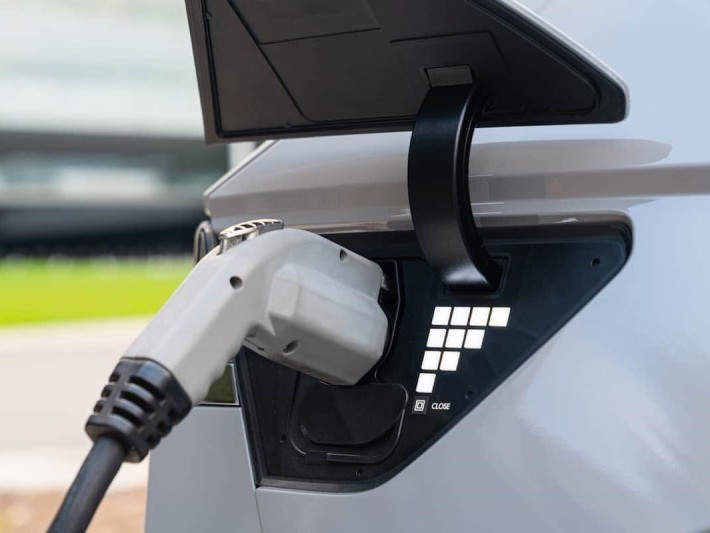
580,000 km & 87.7% Battery Health: Ioniq 5’s Incredible Durability
MichaelMay 6, 2025

Revolutionizing Hybrids: Hyundai’s New System vs. Toyota's Hybrid System
Kevin WongApr 22, 2025
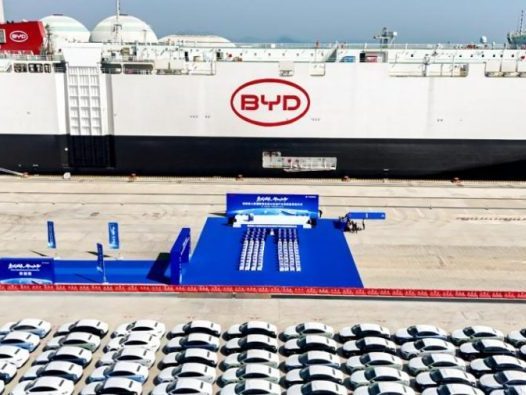
BYD Sets Global Sales Target of 5.5 Million Units for 2025
RobertMar 26, 2025
View More





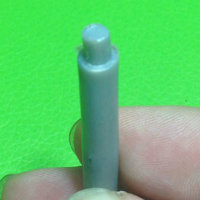
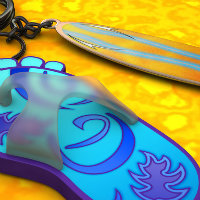




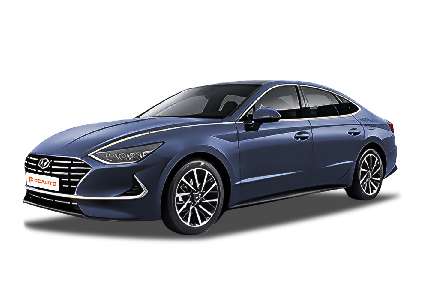




Pros
Cons